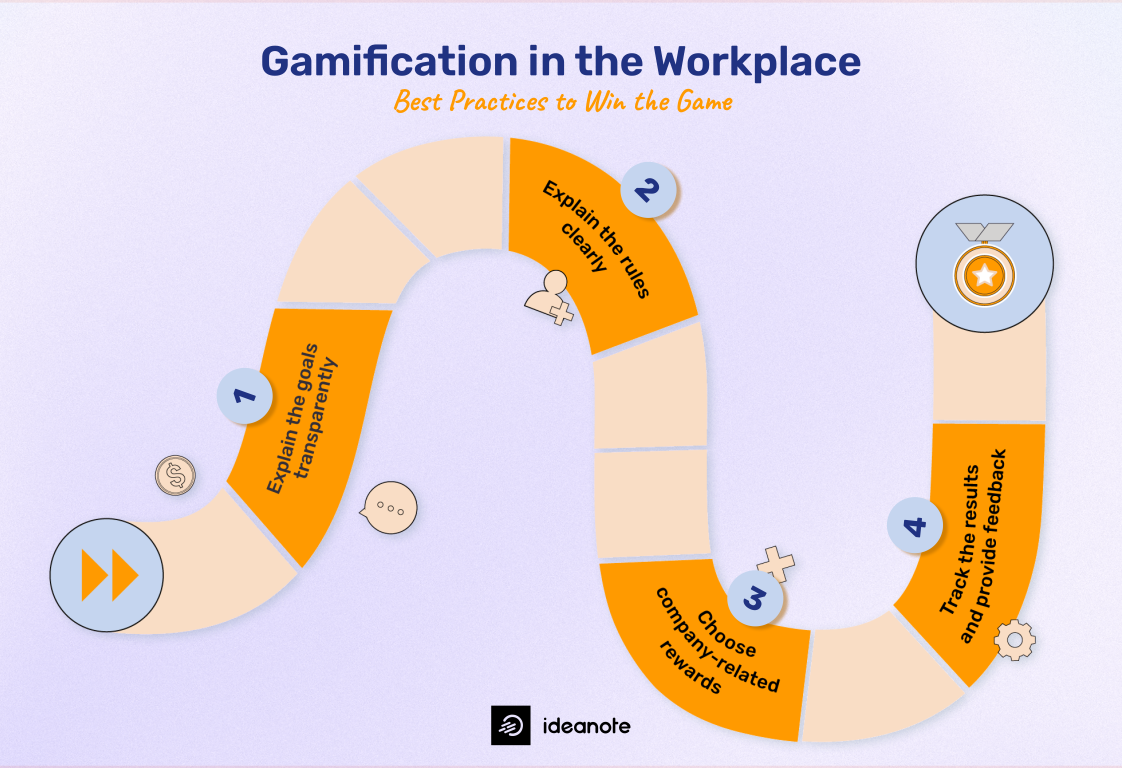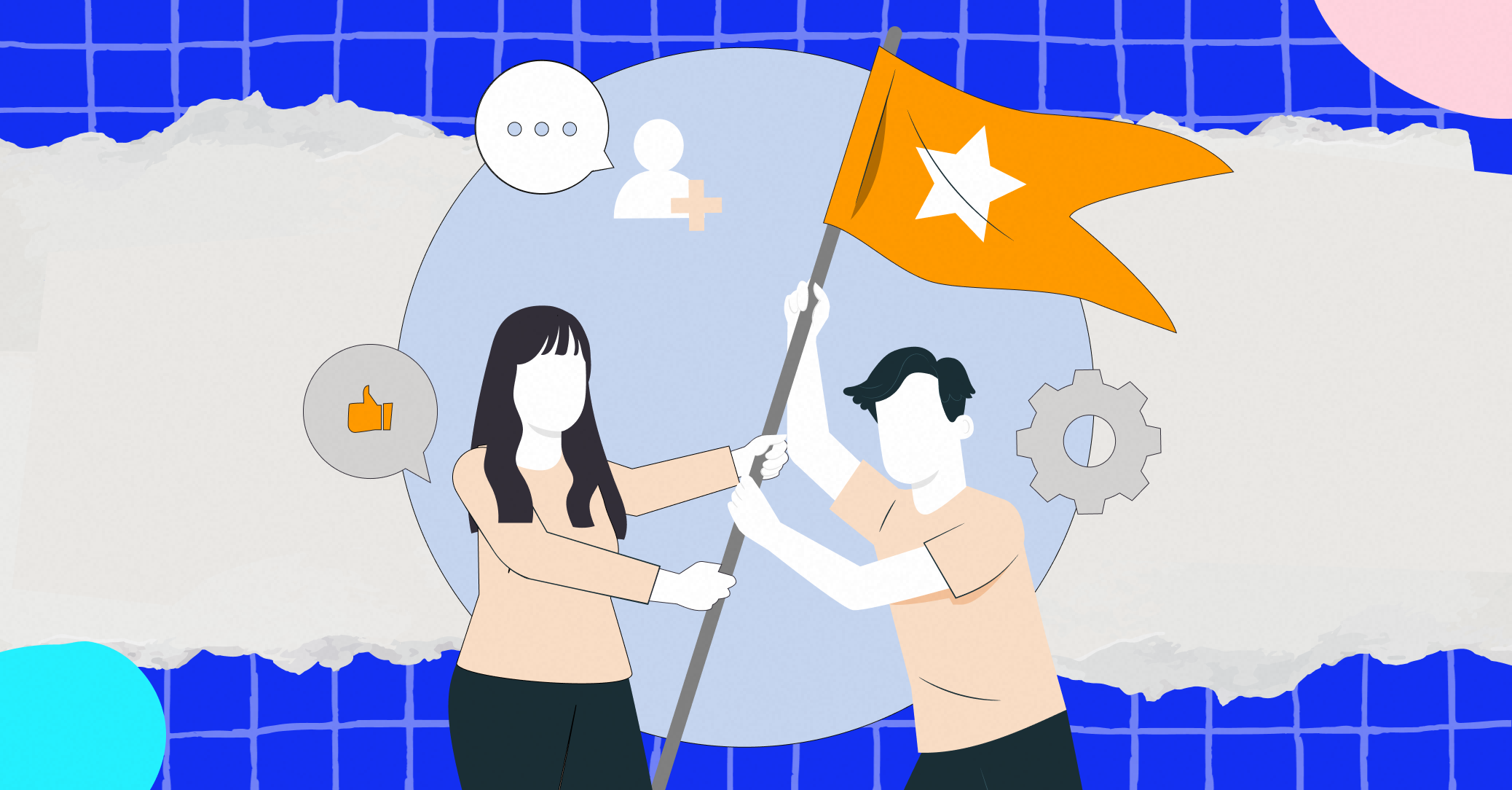Gamification in the Workplace: Yay or Nay?
Gamification is a buzzword nowadays, with many modern workplaces adopting this technique to attract and engage employees. But is gamification in the workplace the ultimate solution for long-term employee engagement?

Gamification is a buzzword nowadays, with many modern workplaces adopting this technique to attract and engage employees.
But is gamification in the workplace the ultimate solution for long-term employee engagement? We believe there are both pros and cons to this approach.
In this article, we'll explore the good and the not-so-good sides of gamification in the workplace. Plus, we'll share some gamification practices we stand by.
What Is Gamification in the Workplace?
When applied to the workplace, gamification transforms daily, boring tasks into engaging and interactive experiences by incorporating game-like elements. This includes challenges, rewards, and friendly competition to boost motivation among employees.
In essence, gamification in the workplace uses game-like elements to boost productivity, encourage collaboration, and make work more enjoyable and fulfilling.
Is Gamification a Good Thing for Employee Engagement?
Gamification is a great way to engage employees. In TalentLMS’s 2019 Gamification at Work survey, 89% of employees said that gamification makes them feel more productive and happier.
Still, this doesn’t mean every gamification practice is a good thing.
We believe there are a few things that aren’t entirely positive about gamification in the workplace - mainly implementing monetary awards.
When money is expected as a reward for engaging in training or doing extra tasks, it turns gamification into a competition driven by money, which can be unhealthy for the company culture in the long run.
As a purpose-driven company, we think the best way to engage employees is by giving them a sense of meaning - something a monetary reward can’t achieve.
When they understand the “why” behind what they do, employees feel like their work is contributing to the company’s success, which makes them feel more engaged.
Gamification vs. Innovation to Drive Motivation
While gamification adds an element of fun to the workplace, it won’t make a solid change in employee engagement on its own. To truly make an impact, gamification has to go hand-in-hand with innovation.
An innovation-led company culture that encourages employees to contribute their ideas will make them feel more engaged than receiving a gift or cash bonus.
In the end, the feeling of meaning and fulfillment from seeing their contributions make an impact is much more rewarding than any gift or bonus.
However, this doesn’t mean that gamification in the workplace can’t be a good way to boost productivity and motivation by making work more fun.
Examples of Employee Engagement Games We Believe In
Here are examples of gamification in the workplace that we believe in.
Employee Engagement Games for Training and Onboarding
The world is moving forward quickly, and companies must help their employees keep up with new technologies and skills.
But constant upskilling and training can become a burden to many employees. 48% of employees report that they’re already burnt out at work, according to Microsoft’s Work Trend Index Special Report.
Gamification can make the learning process lighter. Like Duolingo uses a gamified approach to language learning with leaderboards, skill levels, and point chats, companies can use these same gamification practices to make employee training and onboarding more fun.
Competition for Fun
Organizing competitions among employees, teams, and departments can be a highly effective strategy for boosting teamwork and motivation in the workplace.
Once the competition is over, it’s important to debrief its results. This debriefing provides an excellent opportunity for constructive feedback and knowledge sharing. Winners can share their processes and tips, creating a culture of mutual learning and collaboration.
However, it’s important to avoid creating unhealthy competition, which can hurt employee morale in the long term. To prevent workplace competitions from going awry, avoid encouraging direct rivalry between teams and shaming employees with low results.
Gamification of Routine Tasks
Routine tasks can quickly become monotonous, leading to disengagement. However, injecting game-like elements into these everyday tasks can make the workday more enjoyable.
One way to add gamification to the daily workflows is to build a system where employees can turn goals into challenges, such as performing a task in the least amount of time possible. Participants with the best results can receive badges or leaderboard points.
The principle behind gamifying routine tasks is to recognize employees for completing the smallest tasks because these are often the most challenging ones.
Brainstorming
Brainstorming is essentially a gamified approach to coming up with innovative ideas and problem-solving. Using brainstorming techniques, such as mind mapping or rapid ideation, is fun and encourages creativity in the workplace.
This form of gamification is very healthy in the workplace as it drives employee motivation to discover the next groundbreaking idea that can propel the company to success.
Gamification in the Workplace: Best Practices
With something as ambiguous as mixing work with fun, gamification can easily go wrong and miss its intended purpose.
To make sure your investment in gamification doesn’t go to waste, here are the best practices for healthy gamification in the workplace.

Explain the Goals of the Game
Before encouraging your employees to participate in gamification, clearly outline your goals and intentions for each game.
When using gamification to tackle engagement problems, be straightforward with your employees. For example, if you've introduced a game to improve productivity on a specific task, let them know. If you've set up a competition to make learning new software more enjoyable, let them know.
Explain the Rules
Gamification can only achieve the intended results if everyone clearly understands the rules of the game. Make the rules and expectations clear for each game you’re introducing.
Explain how to play, how to win, who the opponents are, and how results are being tracked. Clarity keeps everyone on the same page. Plus, it helps to avoid demotivation caused by confusion and create a positive and inclusive gaming experience.
Choose Your Rewards Carefully
Research by Dan Ariely shows that competing for a prize, no matter how small, improves employee performance in the short term but hurts it in the long run. That’s why you must choose your rewards carefully.
To prevent gamification from becoming an unhealthy competition rather than a fun way to drive creativity, motivation, and a sense of accomplishment, avoid giving your employees monetary rewards.
In fact, you should avoid any rewards that aren’t directly tied to the company, such as a company-branded sweatshirt or a vacation in one of the company hotel resorts.
Rewards should be “nice to have” rather than something that is expected for participating in gamification. Because when rewards are expected, employees become driven solely by the desire to get the reward rather than by the well-being of the company.
Track the Results
To make sure your gamification initiatives are bringing results and making a change in employee engagement, you must track the results.
This means:
- Measuring the outcomes of the gamification projects.
If you’ve previously set clear KPIs to improve with gamification (and you should have), you’ll be able to measure the effectiveness of your initiatives more precisely.
For example, if one of your key objectives was to increase employee collaboration, you can measure metrics like team completion rates, collaborative achievements, and communication patterns within gamified tasks.
- Assessing how employees performed in each game.
When measuring employee performance in gamification, you want not only to evaluate their results but also to understand what challenges they faced and why they succeeded or failed.
It’s also crucial to offer employees constructive feedback based on these results, as they can reveal important insights into employee engagement patterns. You might find that one team did better than another or that certain individuals did great when paired.
Sharing these discoveries regularly helps everyone perform better and ensures gamification strategies work well.
Ready to engage your people?
Do you think your company could be doing more to engage employees?
If you're looking for an all-in-one solution for your innovation, look no further than Ideanote! With our flexible platform you can do everything from collecting ideas, engaging your crowd and analyzing your innovation performance.



























